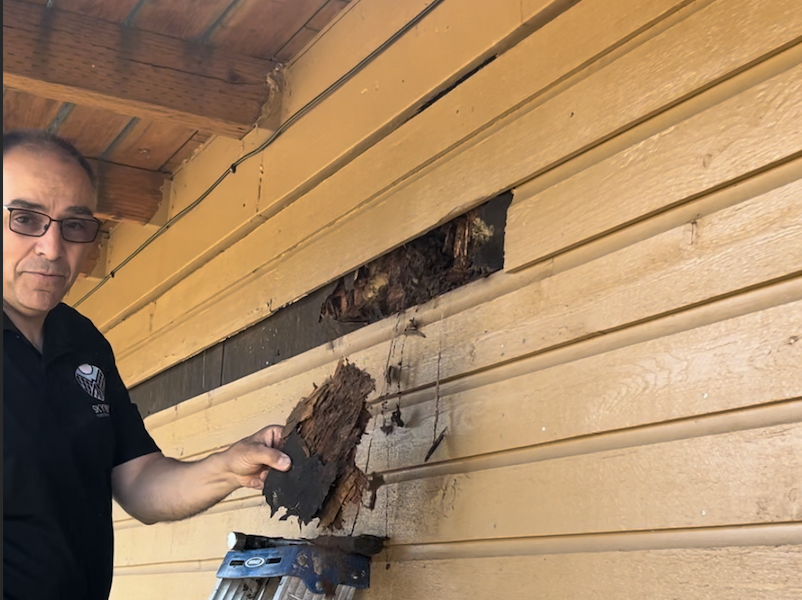Dry Rot: The Silent Destroyer
Dry rot isn’t actually dry. It’s a deceptive name for a destructive wood fungus that can wreak havoc on your home. This weakens your home’s entire structure, leading to costly repairs if left untreated.

What is Dry Rot?
Dry rot is a fungus that thrives in damp conditions. It eats away at wood, causing it to become brittle and lose up to half its strength. While the term “dry rot” might mislead you, dry rot requires moisture to survive and spread.
Spotting the Signs
Detecting dry rot early is crucial to preventing extensive damage. Keep an eye out for these telltale signs:
- Visual cues: Discoloration (purple, orange, or brown patches), grayish strands (hyphae), fluffy white cobwebs (mycelium), and fruiting mushrooms.
- Structural indicators: Strained drywall, water droplets on wood, dark brown or brittle wood, and a musty smell.
Dry rot often hides in hard-to-reach areas like crawl spaces, under floors, and behind walls. However, it can also appear in visible places like window frames, doors, and even countertops.
Common Dry Rot Hotspots
To increase your chances of early detection, focus your inspections on these areas:
- Decks, porches, and patios
- Around windows and doors
- Bathrooms and areas near plumbing
- Exterior trim and siding
- Roof, gutters, and flashing
- Basements and crawl spaces
- Cabinets and areas under sinks
Tackling Dry Rot
If you suspect dry rot, it’s essential to take action immediately. The process involves several steps:
- Identify and eliminate the moisture source: This could be a leaky roof, pipe, or water heater.
- Expose the affected area: Remove drywall or other materials to assess the extent of the damage.
- Remove infected wood: Cut away all compromised wood.
- Treat with fungicide: Apply a fungicide to kill any remaining spores.
- Replace damaged wood: Use treated wood to rebuild affected areas.
- Improve ventilation: Increase airflow to reduce humidity.
Professional Help
For severe cases of dry rot or if you’re unsure how to proceed, consider an experienced contractor. They have the expertise to safely and effectively address the problem.
Prevention is Key
Preventing dry rot is often easier than treating it. Maintain good ventilation, address leaks promptly, and regularly inspect your home for signs of moisture or damage. By taking proactive steps, you can protect your home from the devastating effects of dry rot.
Remember: Early detection and prompt action are crucial for preventing costly repairs. Don’t ignore signs of dry rot!
